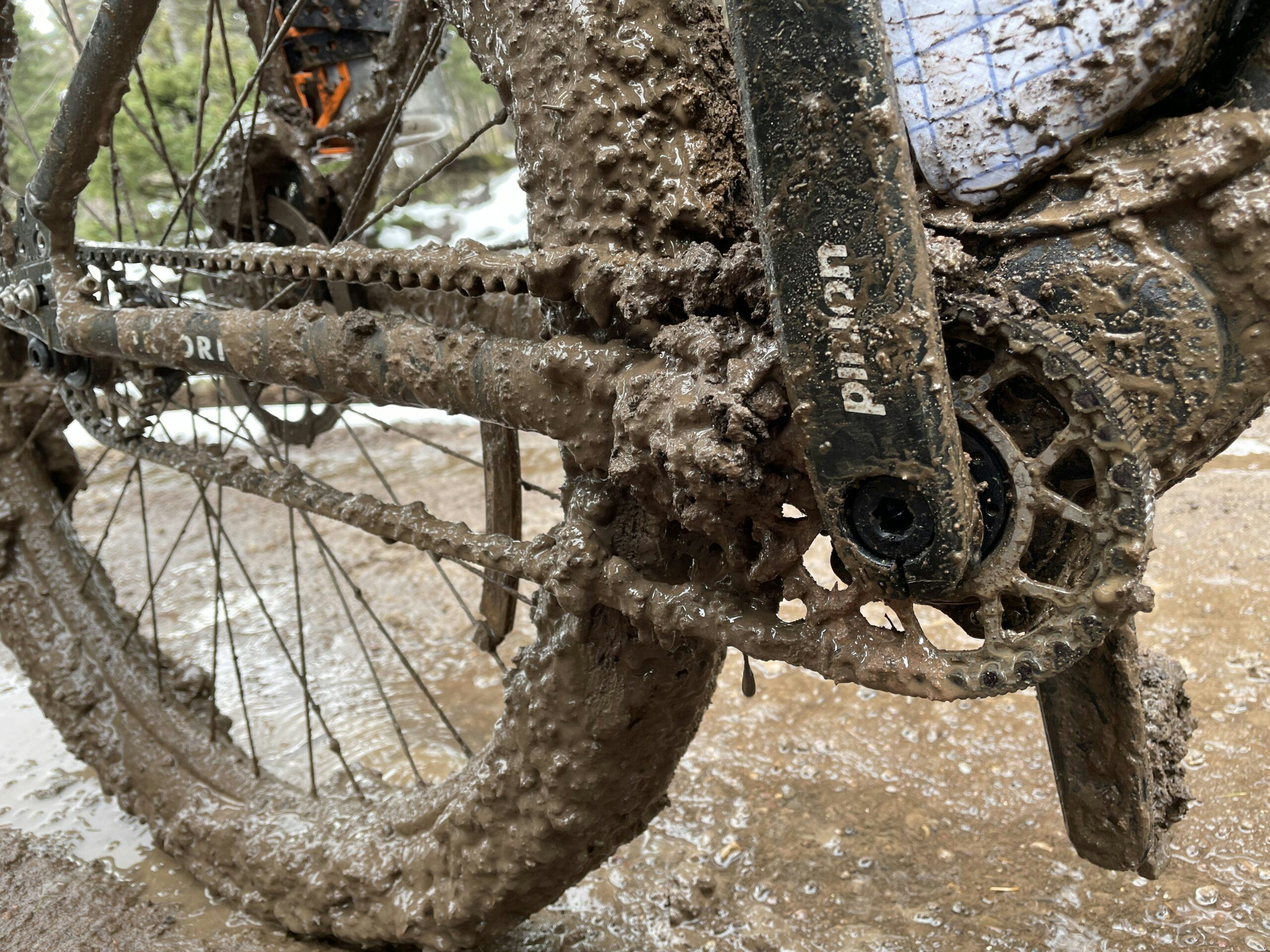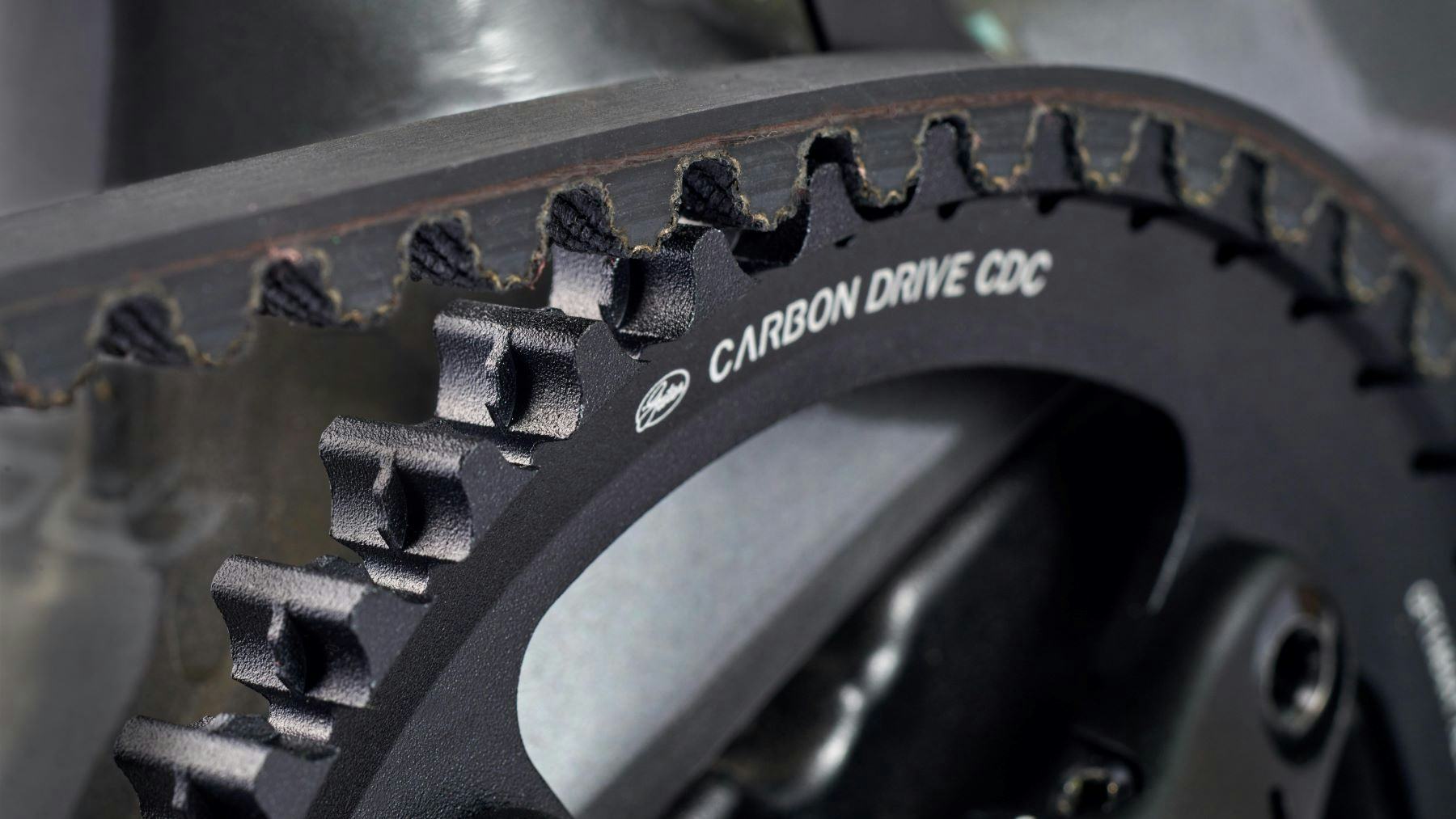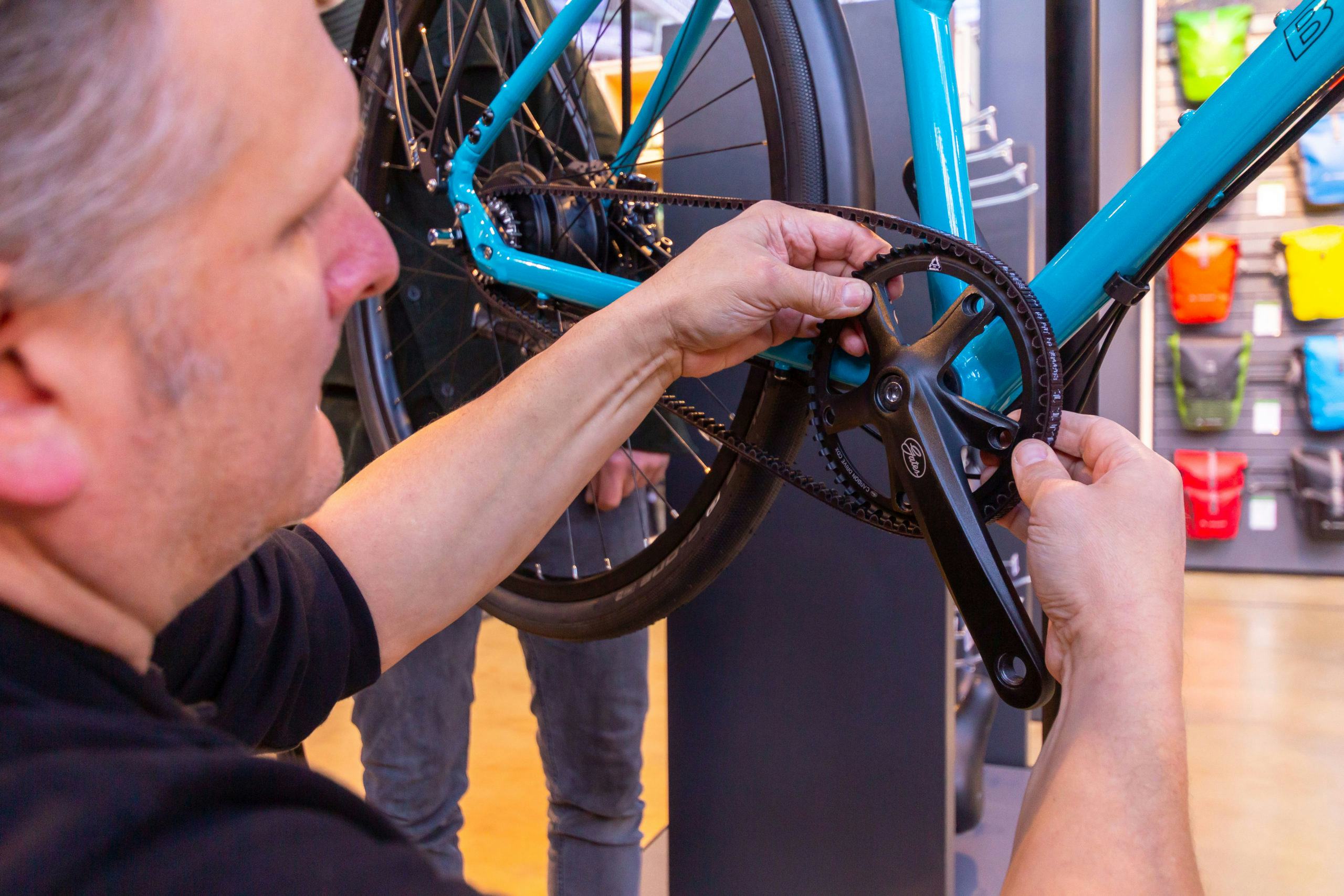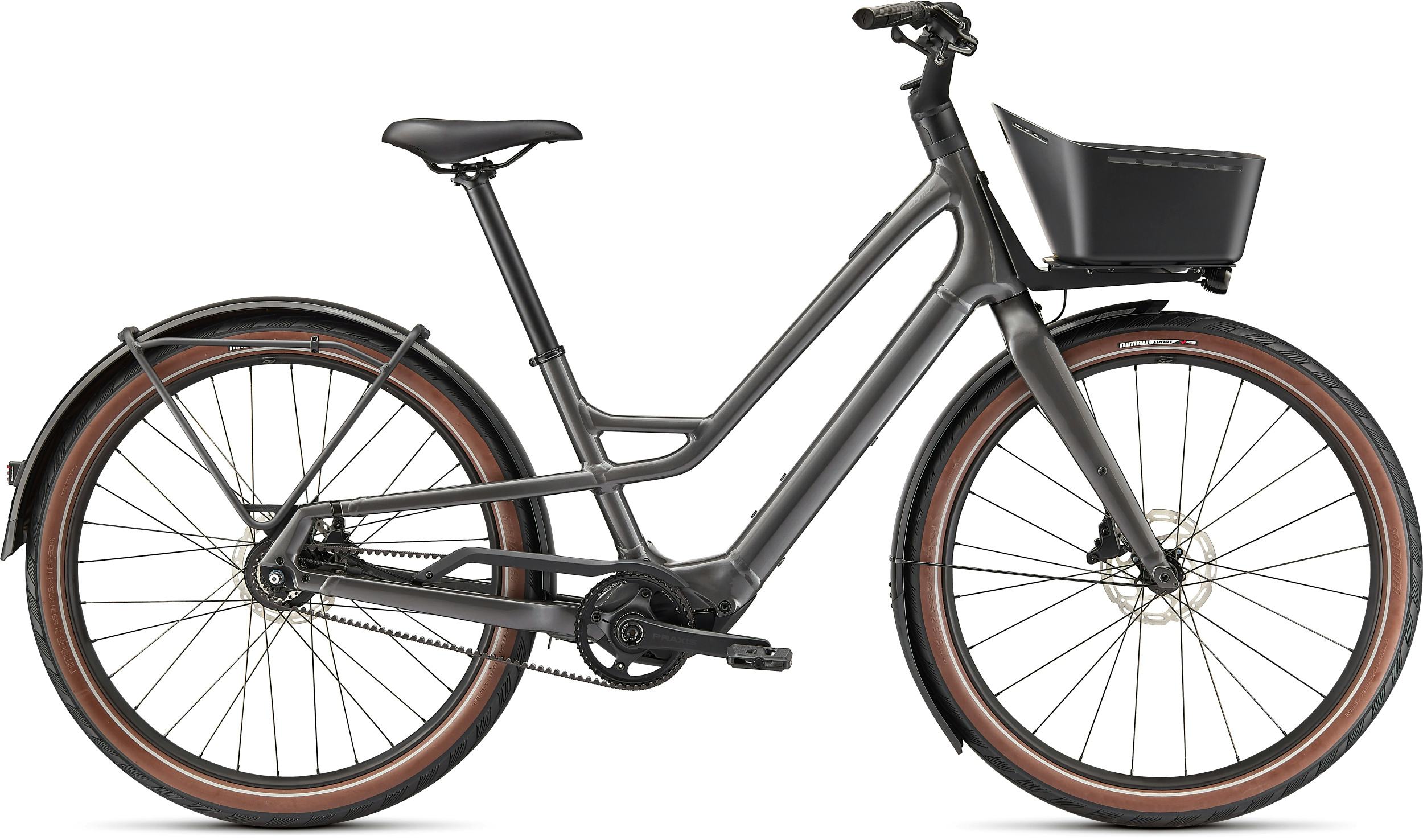When most people think of a bicycle drivetrain, they think of the typical chain and derailleur system. However, for the past fifteen years there has been an alternative – the Gates Carbon Drive belt system. Due to its construction, a belt drive has many advantages over a standard chain.
Gates Carbon Drive, for instance, is made of carbon-fiber tensile cords in a polyurethane covering, which makes the belt strong but also light. The ride is smooth since the belt is not made of so many interlocking parts the way a chain is. And thanks to the polyurethane covering, the belt does not rust and is easy to clean.
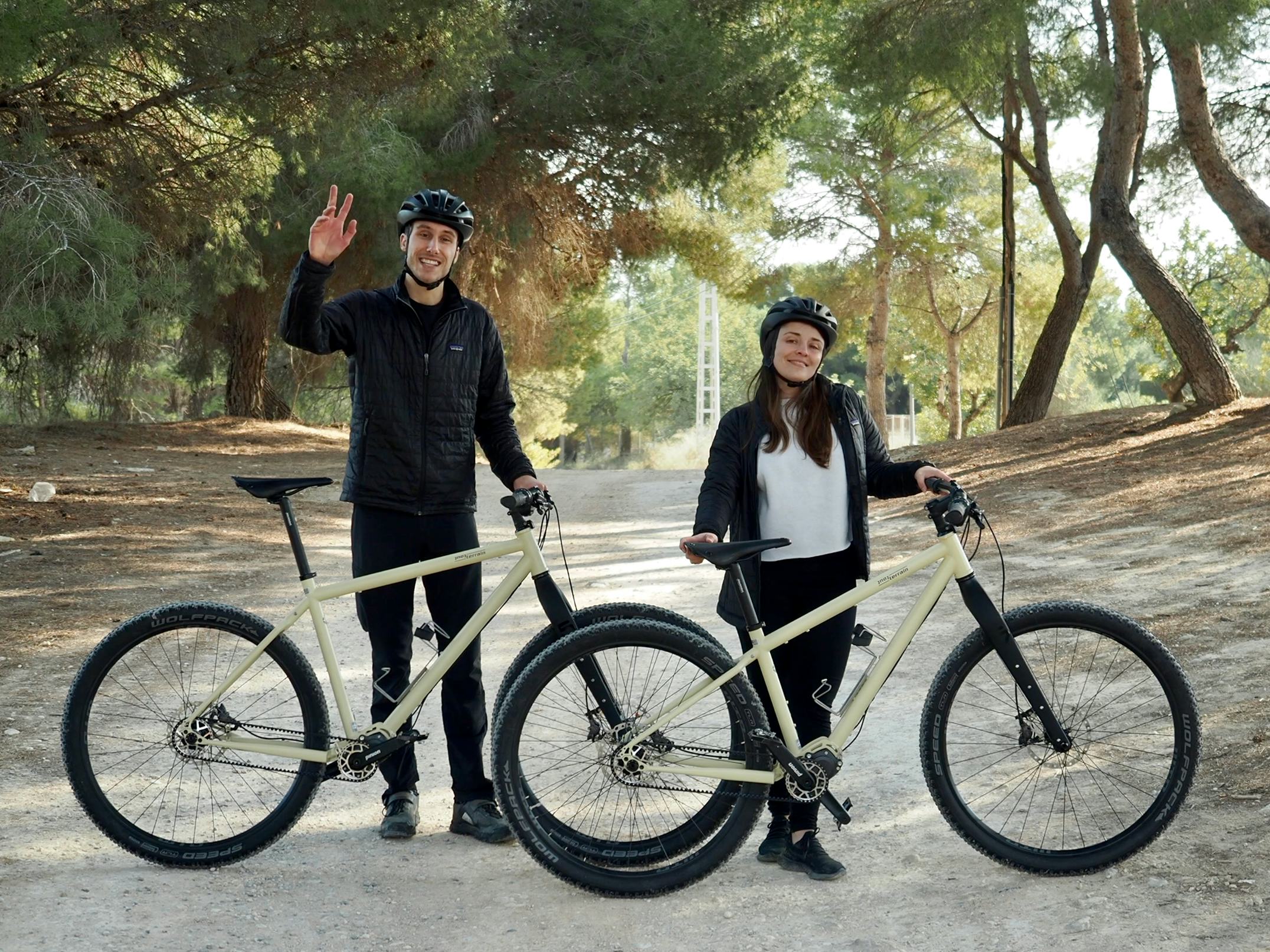
The bicycle’s first belt
The Strida bicycle was first to use a Gates belt in the 1980s but wasn’t designed for long distance riding or harsh conditions.
Throughout the 80s and 90s, extensive lab and field testing at Gates accelerated, expanding replacement of roller chains in high demand motorcycle & industrial applications.
“We replaced one customer’s 190-pound chain with only a 9-pound belt, resulting in longer life. I knew a Gates belt solution could offer a huge improvement for bicycle drivetrains, and carbon fiber as a tensile cord was the answer. We launched Gates Carbon Drive to the bicycle market in 2007,” said Todd Sellden, 29-year Gates veteran and Director of Business Development for Gates Carbon Drive.
The true test of the Gates Carbon Drive belt system came with the experience of numerous adventure riders all over the world, as well as by everyday commuters and haulers of goods.
Field-testing the belt through extreme adventure
To showcase just a few of the adventurers putting their Gates belt systems through extraordinary challenges, Gates has created UnchainYourAdventure.com , a new site which celebrates bike life, exploration, and the open road. The site focuses on the experiences – and videos – of Kamran On Bike, Ryan van Duzer, Tristan Bogaard and Belén Castelló. Each of these riders have proven the Gates belt system in ways labs could never simulate:
- Kamran Ali – known on social media as Kamran On Bike – said “Whether it was the jungle of Central America, the Karakoram mountains of Pakistan, or temperatures of -20°C, the Gates belt drive always prevailed.”
- “Gates Carbon Drive - it just works. An adventure is hard enough. It's nice when maintenance isn't thrown into the mix,” says Ryan Van Duzer, whose DuzerTV YouTube channel includes many of his belted bicycle journeys.
- “Having peace of mind while your drivetrain endures the worst is something that was previously unknown to us,” say Tristan Bogaard and Belén Castelló, who made the switch to belt just this year.
Bicycle lovers can check out the website to see these riders’ adventures and experience with belt drives.

Unchaining the daily 'e' commute
The strength and all-weather capability of belts makes them just as well-suited to substitute chain on a Copenhagen commute as it does through the peaks of Patagonia. Gates Carbon Drive is increasingly spec’d by bike brands on a variety of commuter and cargo mid-drive e-bikes, which have experienced a sales boost in recent years due to COVID, traffic congestion, and sustainable mobility trends.
One reason for rising belt use on these applications is the ever-rising torque of mid-drive motors since they were first popularized in 2010. Back then, max torque was between 30-50 Nm. Today, many mid-drives boast torque well over 100 Nm. Combining both the human and electric loads on bionic cargo bikes, drivetrains can experience power loads well above 1 kW, roughly 10X the typical load through a traditional bicycle. Due to this trend and several other factors, approximately 1,000 bike brands throughout the world now use Gates Carbon Drive.
Look for continued innovations in belt drive systems from Gates and other suppliers of derailleur-alternatives for bikes, e-bikes, and other powered two-wheelers to meet the growing performance needs of the mobility industry for both adventure and transportation.
This article is sponsored by Gates.

